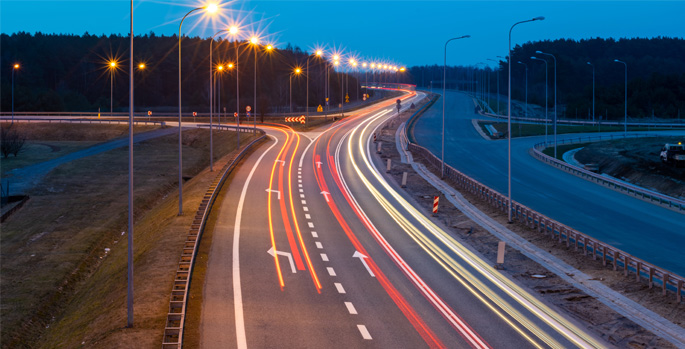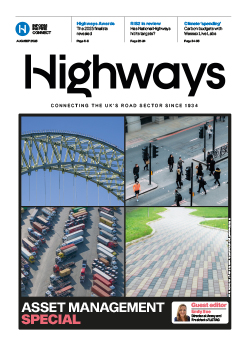National Highways is trialling lighting switch-offs near Birmingham with a view to permanently removing the lighting should the trials be successful.
The trial is taking place alongside plans to switch 70% of its road network lighting to more efficient LED bulbs by 2027.
It is currently conducting year-long switch-off trials for motorway lighting along 91 miles of the M6 from Keele Bank services down to Strensham Services on the M5, and approximately 54 miles between the M27 junction 12 and the M3 junction 13.
These trials are to allow National Highways time to assess areas of motorways which are being considered for lighting removal to reach carbon emission targets and free up taxpayer money for use in other areas. It will make its assessments against nighttime casualty figures from the previous five years, to see if there is a significant impact on safety by the removal of the lighting.
The issue of motorway lighting was recently highlighted by a written question submitted by Rebecca Paul, MP, to Secretary of State for Transport Lilian Greenwood, MP, in which she asked: ‘What recent discussions she has had with National Highways on its programme of (a) turning off and (b) removing lights on motorways.’
In response, Ms Greenwood said: ‘The Department meets monthly with National Highways to discuss its performance and delivery. This includes discussions on the company’s actions to meet its Key Performance Indicator targets, one of which is Corporate Carbon reduction. Electricity used to light the strategic road network is by far the biggest contributor to National Highways’ overall carbon emissions. To meet the reduction target, National Highways has been trialling turning off some sections of lighting, where it has been assessed safe to do so, alongside its LED replacement programme.
The Office of Rail and Road, as the independent highways monitor, also meets the Department monthly to provide advice on National Highways’ plans and ongoing performance, also covering the Company’s actions to reduce its carbon emissions.’
The current switch-off trial comes after a previous scheme to turn off motorway lighting at midnight was trialled between 2009-2019. This trial was ended early in 2018 in favour of switching lighting to LED bulbs, but during this period, reports indicated that on ‘lighting unlit’ sections – which included lighting that was non-operational for other reasons – casualties rose by 88% (from 93 to 175) between 2010 and 2017.
The report also pointed out that this was a relatively low figure, compared to the 14,225 casualties on the network as a whole during 2017.
At the time of this report, the company said that data ‘suggests that you are more likely to be involved in a casualty incident on a lit section of road’, but as previously reported in Highways, this could be indicative of the fact that lighting is more likely to be installed on more dangerous sections of the network.
When asked for comment, a spokesperson for National Highways said: ‘Safety is our priority and any decision to remove lighting is fully researched and carefully considered.
‘This allows us to use taxpayers money on improving other elements of the road network that bring greater safety benefits for drivers while reducing our carbon output.’
Image credit: Shutterstock @ Krzysztof Bubel






